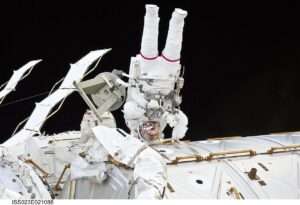Introduction
Hey there, space enthusiasts! Ever wondered about that incredible floating hub up above us? Well, fasten your seat belts because we’re about to explore the International Space Station, a space wonderland where countries team up to unlock the secrets of the cosmos. Hang tight as we take a laid-back trip into the history, cool facts, and the awesome vibe of the ISS. Ready to be amazed? Let’s dive in!
A Trip Back in Time
The idea of a space station shared by many countries started in the 1980s, but it wasn’t until 1998 that the first part, called Zarya, was launched. Since then, more parts have been added, and now the ISS is a symbol of how different countries can achieve incredible things when they work together. NASA from the United States, Roscosmos from Russia, ESA from Europe, JAXA from Japan, and CSA from Canada all play a part in this space collaboration and to reveal the universe’s and the solar system‘s mysteries

What Makes Up the International Space Station
Living Spaces and Labs:
The ISS is like a giant puzzle, made up of different sections, each with a unique job. Some parts are where astronauts live, while others house cool scientific tools and spaces for experiments. It’s like a floating home and a high-tech lab combined!
Power from the Sun:
To keep everything running, the ISS uses solar panels to catch energy from the sun. These panels provide power for the station, making sure it can do its job while orbiting Earth.
Breathing Easy in Space:
Although living in space is challenging, the ISS utilizes smart systems to recycle air and water, thereby creating a self-sustaining environment. Essentially, it functions like a mini Earth up there!
Why the ISS Matters
The International space station is more than just a space hangout; it’s a hub for groundbreaking research. Its microgravity environment is used by researchers to advance technology, physics, and medicine. They have a particular interest in understanding the impact of long space trips on human health, a crucial aspect for planning future missions to destinations such as Mars.

Teamwork Makes the Dream Work
The ISS is a shining example of countries working together. Astronauts from different nations live and work side by side, showing that borders don’t matter in space. It’s a place where friendships and teamwork thrive, proving that incredible things happen when people unite for a common goal.
Astronauts and International Cooperation
Astronauts undergo rigorous training, preparing them for the challenges of space living and conducting experiments. International crews on the ISS exemplify the cooperative spirit that defines space exploration.
International collaboration extends beyond astronauts to scientists, engineers, and space agencies. The ISS shares knowledge for the benefit of humanity, fostering an environment.
What’s Next
With an eye on the future, the ISS continues to play a crucial role in our space adventures. Talks are ongoing about what comes after it, with ideas ranging from new projects to more businesses getting involved in low Earth orbit.
Wrapping Up
Finally, The International Space Station is a big deal. It’s a symbol of human cleverness and cooperation. As we keep exploring space, the ISS will be remembered as a place where we overcame challenges and showed what we can achieve together. It’s a legacy that will inspire generations to keep reaching for the stars and beyond.

Want to know interesting facts on our Solar system: Click here
FAQs
Q) How fast does the ISS travel in orbit?
A) The ISS hurtles through space at an astonishing speed of approximately 28,000 kilometers per hour, completing an orbit around Earth roughly every 90 minutes.
Q) What is the purpose of the ISS?
A) The ISS serves as a unique space laboratory, facilitating scientific research and experiments in a microgravity environment. It fosters international collaboration for the advancement of human knowledge.
Q) How do astronauts sleep on the ISS?
A) Sleeping in microgravity poses challenges, and astronauts use specially designed sleeping bags that anchor them to a wall or a sleeping pod, preventing them from floating aimlessly.
Q) Can civilians visit the ISS?
A) While it was once a distant dream, commercial space travel is on the horizon. Companies like SpaceX are working towards making space tourism a reality, allowing civilians to experience the wonders of the ISS.
Q) How do astronauts handle the ISS’s garbage?
A) Waste management on the ISS involves recycling and repurposing. Advanced filtration systems carefully process solid waste, and they even filter and convert urine into drinking water.
Q) How long does it take to reach the ISS from Earth?
A) The journey to the ISS takes approximately six hours. Spacecraft, like the Russian Soyuz, execute a series of maneuvers to dock with the ISS, ensuring a safe and precise connection.
Follow me on Quora








